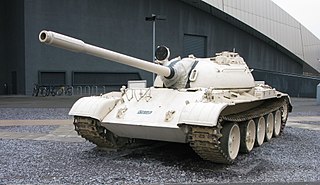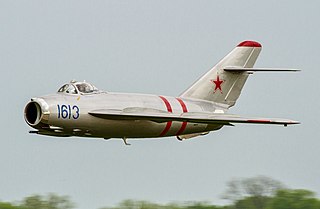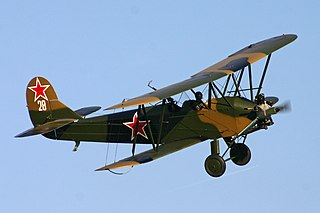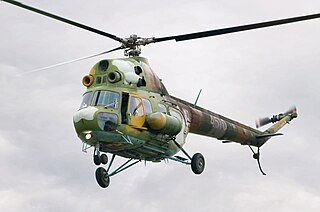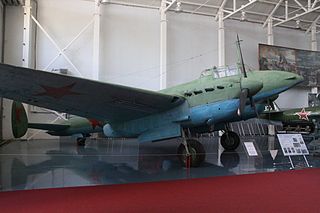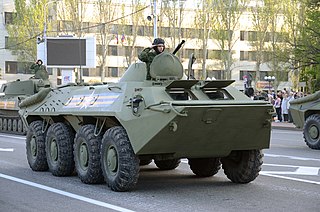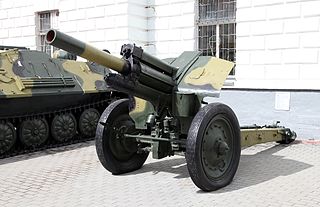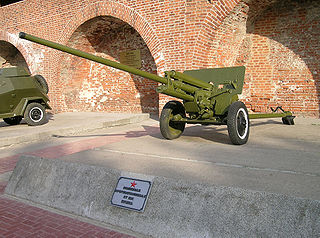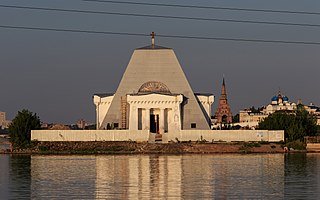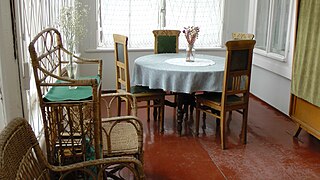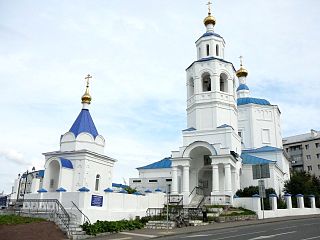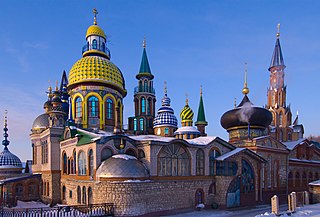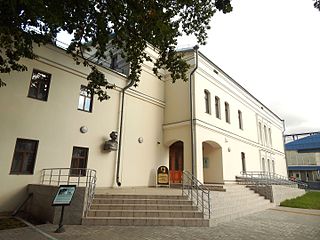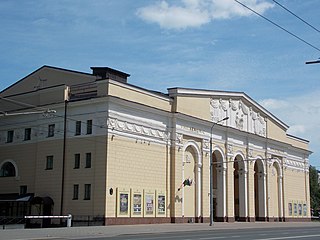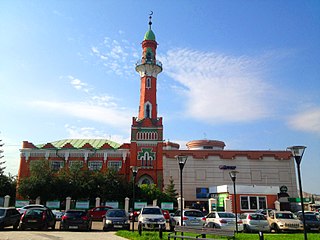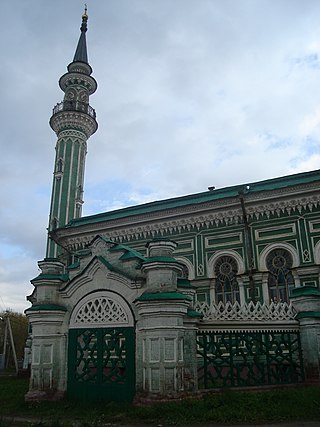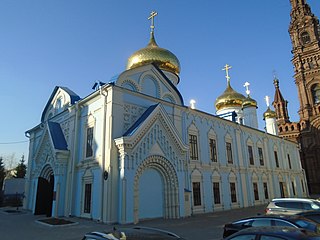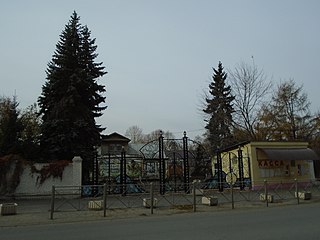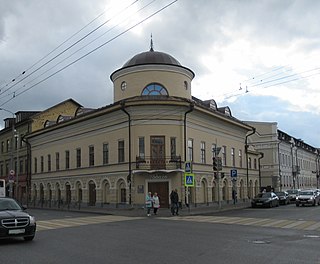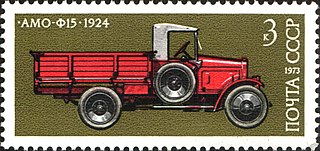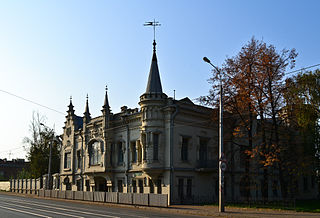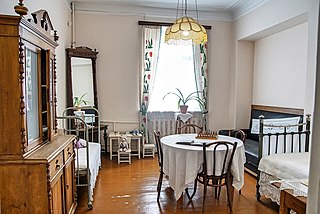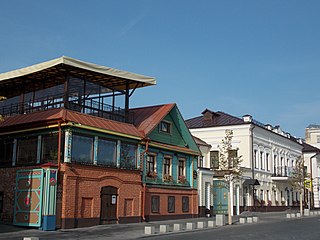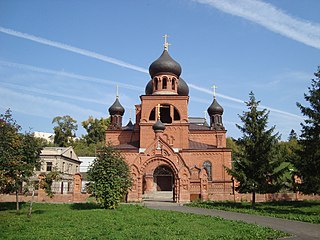49 Sights in Kazan, Russia (with Map and Images)
Legend
Welcome to your journey through the most beautiful sights in Kazan, Russia! Whether you want to discover the city's historical treasures or experience its modern highlights, you'll find everything your heart desires here. Be inspired by our selection and plan your unforgettable adventure in Kazan. Dive into the diversity of this fascinating city and discover everything it has to offer.
Sightseeing Tours in Kazan1. Т-72
The T-72 is a family of Soviet main battle tanks that entered production in 1971. The T-72 was a development based on the T-64 using thought and design of the previous Object 167M. About 25,000 T-72 tanks have been built, and refurbishment has enabled many to remain in service for decades. It has been widely exported and has seen service in 40 countries and in numerous conflicts. The Russian T-90 introduced in 1992 and the Chinese Type 99 are further developments of the T-72. Production and development of various modernized T-72 models continues today.
2. БМП-1
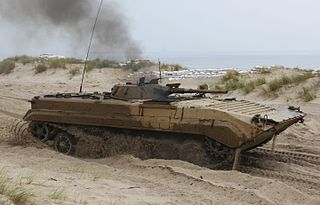
The BMP-1 is a Soviet amphibious tracked infantry fighting vehicle that has been in service from 1966 to the present. BMP stands for Boyevaya Mashina Pyekhoty 1, meaning "infantry fighting vehicle, 1st serial model". The BMP-1 was the first mass-produced infantry fighting vehicle (IFV) of the Soviet Union. It was called the M-1967, BMP and BMP-76PB by NATO before its correct designation was known.
3. Т-55
The T-54 and T-55 tanks are a series of Soviet main battle tanks introduced in the years following the Second World War. The first T-54 prototype was completed at Nizhny Tagil by the end of 1945. From the late 1950s, the T-54 eventually became the main tank for armoured units of the Soviet Army, armies of the Warsaw Pact countries, and many others. T-54s and T-55s have been involved in many of the world's armed conflicts since their introduction in the second half of the 20th century.
4. Т-80

The T-80 is a main battle tank (MBT) that was designed and manufactured in the former Soviet Union and manufactured in Russia. The T-80 is based on the T-64, while incorporating features from the later T-72 and changing the engine to a gas turbine. When it entered service in 1976, it was the first production tank to be powered solely by turbine.
5. Т-62
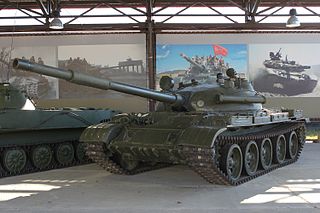
The T-62 is a Soviet main battle tank that was first introduced in 1961. As a further development of the T-55 series, the T-62 retained many similar design elements of its predecessor including low profile and thick turret armour.
6. TU-22M
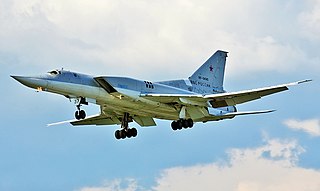
The Tupolev Tu-22M is a supersonic, variable-sweep wing, long-range strategic and maritime strike bomber developed by the Tupolev Design Bureau in the 1960s. The bomber was reported as being designated Tu-26 by Western intelligence at one time. During the Cold War, the Tu-22M was operated by the Soviet Air Forces (VVS) in a missile carrier strategic bombing role, and by the Soviet Naval Aviation in a long-range maritime anti-shipping role. As of 2021, there were 66 of the aircraft in service.
7. Ми-8
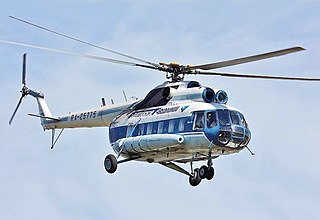
The Mil Mi-8 is a medium twin-turbine helicopter, originally designed by the Soviet Union in the 1960s and introduced into the Soviet Air Force in 1968. It is now produced by Russia. In addition to its most common role as a transport helicopter, the Mi-8 is also used as an airborne command post, armed gunship, and reconnaissance platform.
8. БРДМ-2
The BRDM-2 is an amphibious armoured scout car designed and developed in the Soviet Union. It was also known under the designations BTR-40PB, BTR-40P-2 and GAZ 41-08. This vehicle, like many other Soviet designs, has been exported extensively and is in use in at least 38 countries. It was intended to replace the older BRDM-1, and has improved amphibious capabilities and better armament compared to its predecessor. The BRDM-2 production continues in Poland as of 2022.
9. МиГ-17
The Mikoyan-Gurevich MiG-17 is a high-subsonic fighter aircraft produced in the Soviet Union from 1952 and was operated by air forces internationally. The MiG-17 was license-built in China as the Shenyang J-5 and Poland as the PZL-Mielec Lim-6. The MiG-17 is still being used by the North Korean air force in the present day and has seen combat in the Middle East and Asia.
10. МиГ-27
The Mikoyan MiG-27 was a variable-sweep ground-attack aircraft, originally built by the Mikoyan-Gurevich design bureau in the Soviet Union and later licence-produced in India by Hindustan Aeronautics as the Bahadur ("Valiant"). It is based on the Mikoyan-Gurevich MiG-23 fighter aircraft, but optimised for air-to-ground attack. Unlike the MiG-23, the MiG-27 did not have widespread use outside Russia, as most countries opted for the Mikoyan-Gurevich MiG-23BN and Sukhoi Su-22 instead. As of late 2023, all Russian, Indian, Sri Lankan, Ukrainian, and Kazakh MiG-27s have been retired, bringing the type's service to an end.
11. По-2
The Polikarpov Po-2 served as an all-weather multirole Soviet biplane, nicknamed Kukuruznik. The reliable, uncomplicated design of the Po-2 made it an ideal trainer aircraft, as well as doubling as a low-cost ground attack, aerial reconnaissance, psychological warfare and liaison aircraft during war, proving to be one of the most versatile light combat types to be built in the Soviet Union. As of 1978 it remained in production for a longer period of time than any other Soviet-era aircraft.
12. Ми-2
The Mil Mi-2 is a small, three rotor blade Soviet-designed multi-purpose helicopter developed by the Mil Moscow Helicopter Plant designed in the early 1960s, and produced exclusively by WSK "PZL-Świdnik" in Poland. Nearly 5500 were made by the time production stopped in 1999, and it remains in service globally.
13. Пе-2
The Petlyakov Pe-2 was a Soviet twin-engine dive bomber used during World War II. One of the outstanding tactical attack aircraft of the war, it also proved successful as a heavy fighter, as a night fighter and as a reconnaissance aircraft. The Pe-2 was, numerically, the most important Soviet bomber of World War II, at their peak comprising 75% of the Soviet twin-engine bomber force. The Soviets manufactured Pe-2s in greater numbers during the war than any other twin-engine combat aircraft except for the German Junkers Ju 88 and the British Vickers Wellington. Several communist air forces flew the type after the war, when it became known by the NATO reporting name Buck.
14. БТР-70
The BTR-70 is an eight-wheeled armored personnel carrier originally developed by the Soviet Union during the late 1960s under the manufacturing code GAZ-4905. On August 21, 1972, it was accepted into Soviet service and would later be widely exported. Large quantities were also produced under license in Romania as the TAB-77.
15. БМ - 13 Катюша
The BM-13 is a Soviet combat vehicle of rocket artillery of the Second World War, the most massive Soviet combat vehicle (BM) of this class. Most commonly known by the popular nickname "Katyusha", the soldiers of Nazi Germany called it "Stalin's organ" because of the sound emitted by the plumage of the rockets.
16. М-30
The 122 mm howitzer M1938 (M-30) is a Soviet 121.92 mm (4.8 inch) howitzer. The weapon was developed by the design bureau of Motovilikha Plants, headed by F. F. Petrov, in the late 1930s, and was in production from 1939 to 1955. The M-30 saw action in World War II, mainly as a divisional artillery piece of the Red Army (RKKA). Captured guns were also employed later in the conflict by the German Wehrmacht and the Finnish Army. Post World War II the M-30 saw combat in numerous conflicts of the mid- to late twentieth century in service of other countries' armies, notably in the Middle East.
17. Спасо-Преображенский собор
The Transfiguration Monastery is an inactive Orthodox monastery in the southwestern part of the Kazan Kremlin. It was founded in 1556 by Archimandrite Varsonofy. Monument of Russian architecture of the XVI-XIX centuries.
18. ЗИС-2
The ZiS-2 is a Soviet 57 mm anti-tank gun used during World War II. The ZiS-4 is a version of the gun that was meant to be installed in tanks. ZiS stands for Zavod imeni Stalina, the official title of Artillery Factory No. 92, which produced the gun first.
19. Храм-памятник в честь Нерукотворного Образа Спасителя
The Memorial Church to the Soldiers Who Fell during the Capture of Kazan in 1552 is an Orthodox memorial church in Kazan, built in the XIX century in memory of the soldiers who died during the siege and capture of Kazan in 1552. One of the oldest Kazan monuments and war memorials in Russia.
Wikipedia: Храм-памятник воинам, павшим при взятии Казани в 1552 году (RU), Website
20. Музей ак. Арбузовых
The House Museum of A. E. and B. A. Arbuzov is a Russian state (departmental) memorial museum at the A. E. Arbuzov Institute of Organic and Physical Chemistry of the Kazan Scientific Center of the Russian Academy of Sciences (RAS). It is located in the city of Kazan. It is dedicated to the daily life and scientific activities of outstanding Soviet chemists - academicians Alexander Erminingeldovich and Boris Alexandrovich Arbuzov.
Wikipedia: Дом-музей академиков А. Е. и Б. А. Арбузовых (RU)
21. Церковь Параскевы Пятницы
The Church of the Holy Great Martyr Paraskeva Pyatnitsa is a parish church of the Kazan Diocese of the Russian Orthodox Church, located in the city of Kazan, in the immediate vicinity of the Kazan Kremlin.
22. Temple of all Religions
The Temple of All Religions or the Universal Temple is an architectural complex in the Staroye Arakchino Microdistrict of Kazan, Russia. It consists of several types of religious architecture including an Orthodox church, a mosque, and a synagogue, among others. It is currently under construction since 1992, started by local artist and philanthropist Ildar Khanov. The structure now serves as a cultural center and a residence for Khanov's brother and sister, who both continue to serve as guides and supervisors of the complex.
23. Gorky Park
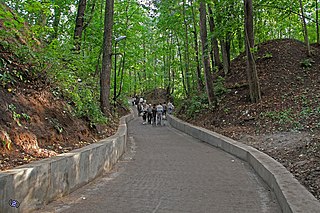
The Gorky Central Park of Culture and Leisure is a large park in the Vakhitovsky district of Kazan, one of the many central parks in the USSR, traditionally named after the writer Maxim Gorky. The southern part is bounded by the square of the same name and Ershov Street, the eastern part is bounded by Vishnevsky Street, the northern part is bounded by Podluzhnaya Street, and the western part is bounded by the Suvorov School. On the square in front of the park there is a memorial from the monument "Fallen for Soviet power" (1967) and the monument to the unknown soldier. The park is home to a large number of gray and red squirrels.
Wikipedia: Центральный парк культуры и отдыха имени Горького (Казань) (RU)
24. The museum of S. M. Gorky and F. I. Shalyapin
The Museum of A. M. Gorky and F. I. Chaliapin in Kazan is a cultural institution, a branch of the National Museum of the Republic of Tatarstan. Located on Maxim Gorky Street, 10. Since 1960, the museum has been included in the register of historical monuments of federal significance.
Wikipedia: Музей А. М. Горького и Ф. И. Шаляпина (Казань) (RU), Website
25. The Tatar State Philharmonic Society after Gabdulla Tukai
The Tatar State Philharmonic named after Gabdulla Tukay is the largest concert organization in Kazan, the Republic of Tatarstan. It is named after the Tatar folk poet, publicist and public figure Gabdulla Tukay.
Wikipedia: Татарская государственная филармония имени Габдуллы Тукая (RU)
26. Г.Р. Державину
The Monument to Derzhavin is a monument to the poet, prominent public figure and the first Minister of Justice of the Russian Empire Gavriil Romanovich Derzhavin, opened in Kazan on December 3, 2003, and is a reproduction of the monument that existed in 1846-1932. It is located at the entrance to the Lyadskaya Garden from Gorky Street.
27. Закабанная мечеть
The Thousandth Anniversary of Islam Mosque or The Anniversary Mosque was built in Kazan, Tatarstan, Russia to commemorate the thousandth anniversary of the conversion of the Volga Bulgars in to Islam in 922. The alternative name of the mosque, and the most commonly used name, is The Mosque Across the Kaban, because most of Kazan's mosques are situated on the other side of the Kaban, where the Tatar community was traditionally located before the October Revolution. The part where the mosque was situated was inhabited predominantly by the Russian community.
Wikipedia: Thousandth Anniversary of Islam Mosque (EN), Website
28. Азимовская мечеть
Äcem Mosque ; is a prominent cathedral mosque in Kazan, Tatarstan, Russia. It is located in the southern part of the Old Tatar Quarter, a historic district populated by Tatars, and is one of about a dozen historical mosques in the district.
29. Zangar mosque
The Blue Mosque is a mosque in Kazan, in the Old Tatar Sloboda, a monument of Tatar temple architecture. It was named after the color of the walls. It was built in 1815-19 in the style of classicism at the expense of the Kazan merchant Akhmet Aitov-Zamanov. The architect is unknown. A two-storey two-hall mosque-jami with a three-tiered minaret on the roof.
30. Kazan Family Center
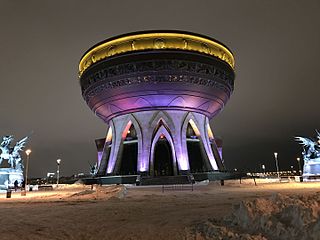
The Kazan Family Center is the main wedding palace (registry office) in the city of Kazan and the Republic of Tatarstan. One of the main modern attractions of the city, playing on its name due to the fact that it was built in the form of a huge cauldron. On the roof there is an observation deck overlooking the Kazan Kremlin, the Kremlin Embankment and the surrounding area. It was opened on July 5, 2013.
31. Рубка подводной лодки «Казань»
K-403 Kazan is a Soviet and Russian nuclear submarine of the 2nd generation, the first nuclear submarine to bear the name of the capital of Tatarstan. The name Kazan was subsequently assigned to the K-561 submarine of project 885 Yasen, which was under construction.
32. Galeev mosque
The Galeyevskaya Mosque is a mosque in Kazan, a monument of Tatar religious architecture. It was built in 1798-1801 at the expense of the merchant Musa Mamyashev in the forms of early classicism of the late XVIII century. It is located on Gabdulla Tukay Street, in the northern part of the Staro-Tatarskaya Sloboda, not far from the former Hay Bazaar. A two-storey two-hall mosque-jami with an octagonal three-tiered minaret in the center of the roof.
33. Kekin House
The Kekin House is a building in Kazan on Gorky Street. The building was built in an eclectic style: it combines Art Nouveau and Neo-Gothic. Moorish motifs can be found in the elements of the building.
34. Собор Богоявления Господня
The Epiphany Cathedral is an Orthodox church located in the Kazan subdistrict and is part of the Kazan and Tatarstan Diocese. The church is situated in the Vakhitovsky district of Kazan on Bauman Street. Its bell tower is a prominent landmark of the city and a monument of religious architecture.
35. Дом Ушковой
The House of Zinaida Ushkova is a building in Kazan, in the Republic of Tatarstan, Russia, which was reconstructed in the beginning of the 20th century in an eclectic style. It is an impressive sight in the city center and an object of Russian heritage. In 1919 it became a central building of the National Library of the Republic of Tatarstan and is now open to visitors and tourists.
36. The Zambezi River
The Kazan Zoological and Botanical Garden sometimes called the Kazan Zoo, is a mixed garden in Kazan, Russia. It displays over 1,000 and 160 species of plants and animals, respectively. As of 2014, the garden was reconstructed and additional spaces were inserted. In 1996, the garden joined the European Association of Zoos and Aquaria.
37. Дом Карла Фукса
Fux House is a historic building in Kazan, located on the corner of Moscow Street and Galiasgar Kamal Street. Object of cultural heritage of regional importance. In the first half of the 19th century, Karl Fuchs lived here (1776-1846), a doctor and ethnographer, professor at the University of Kazan.
38. АМО-Ф-15
The AMO-F-15 was a light truck based on the Italian Fiat 15Ter made at the AMO-plant in Moscow in the Soviet Union from the mid-1920s. It was the first Soviet truck to be produced in the first series, with a total of more than 6,000 units made between 1924 and 1931. Different models were built based on the vehicle: flatbed trucks, omnibuses, fire engines, ambulances and armored versions for the military.
39. Ğabdulla Tuqay

A monument to Gabdulla Tukay, a great Tatar folk poet, literary critic, publicist, public figure and translator, was erected in Kazan on Pushkin Street in the G. Tukay Square in the Vakhitovsky district of the city.
Wikipedia: Памятник Габдулле Тукаю (Казань, улица Пушкина) (RU)
40. Gabdulla Tukay Literary Museum
The Gabdulla Tukay Literary Museum is a memorial museum located in the building of Shamil's house at 74 G. Tukay Street in the city of Kazan. It is a branch of the National Museum of the Republic of Tatarstan.
41. Н. И. Лобачевскому
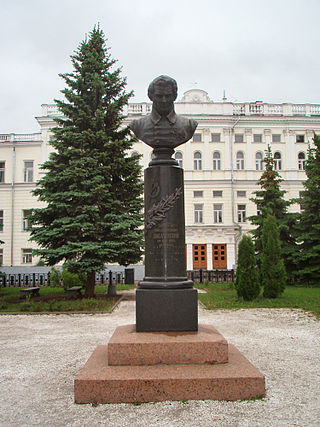
Monument to Lobachevsky is a monument to the outstanding mathematician, figure of university education and public education of the Russian Empire Nikolai Ivanovich Lobachevsky, opened in Kazan on September 1, 1896. It is located in Lobachevsky Square, located on Kremlevskaya Street at the beginning of Lobachevsky Street.
42. Розовая мечеть
The Pink Mosque is a mosque in the Novo-Tatarskaya Sloboda of Kazan. It was built in 1906 at the expense of the merchant Muhammed-Sadyk Galikeev. It was closed in 1931. The architect is unknown. It was named after the color of the walls. It is located at 67 M. Gafuri Street.
43. Kazan College of Technology and Design
Kazan Teachers' Seminary is a historical educational institution and a complex of historical buildings in Kazan, in the Old Tatar Sloboda. It operated in 1872-1918 and was built in the second half of the XIX century. Located on Shigabutdin Marjani Street, houses 24, 26. An object of cultural heritage of regional significance.
44. Музей-квартира Мусы Джалиля
The Musa Jalil Apartment Museum is a museum in Kazan, a structural subdivision of the National Museum of the Republic of Tatarstan. The museum is dedicated to the Tatar poet, Hero of the Soviet Union, Lenin Prize laureate, literary and public figure Musa Jalil.
45. Татарская усадьба
The Sabitov Estate is a complex of historical buildings in Kazan, in the Old Tatar Sloboda, on Shigabutdin Marjani Street, 8. It was built in the second half of the XIX century. An object of cultural heritage of local importance.
46. Двухосный моторный вагон Nivelles
Monument trams in Kazan are three historical trams installed as a monument on the "Alley of Glory" in front of the office of the Municipal Unitary Enterprise "Metroelectrotrans", Peterburgskaya Street.
47. «Ekiyat» Tatar State Puppet Theater

The Tatar State Puppet Theater "Ekiyat" is the largest and one of the oldest puppet theaters in Russia. It is located in Kazan on Peterburgskaya Street in the Vakhitovsky district of the city. The name of the theater is derived from the word tat. akiyat — "fairy tale". Built in the form of a fairy-tale castle-palace, the theater building is an important and popular attraction of the city.
48. Кафедральный собор Покрова Пресвятой Богородицы
The Cathedral of the Apparition of the Kazan Icon of the Most Holy Theotokos is an Old Believer Orthodox church in Kazan, the Cathedral of the Kazan-Vyatka Diocese of the Russian Orthodox Old-Rite Church (ROORC). One of the two churches of the Russian Orthodox Church in the city.
49. Хабад Любавич
The Kazan Jewish Community is a Jewish organization based in Kazan, the capital of the Republic of Tatarstan, located in Kazan, the management and office of the Kazan Jewish Community, a cultural heritage site of federal importance, simultaneously the Habad-Lubavich synagogue, and the choral synagogue.
Share
Disclaimer Please be aware of your surroundings and do not enter private property. We are not liable for any damages that occur during the tours.

